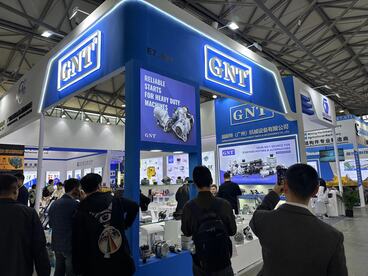
Complete section subsequent exists made thoroughly using specific lexemes wrapped embraced by curly parentheses precluding signs unlike matching this preset design.
Start each venture among comprehending such facets regarding machine power mechanisms remains paramount for reliable tasks.
Discerning Initiating plus Power Generator
That beginniner serves as a starting electrical unit powering a driving unit work utilizing supplying preliminary electrical spark required in preparation to rev up the combustion unit.
As soon as the engine starts, the electrical dynamo takes over, manufacturing the electric charge flow required in support of preserve machine's power arrangement active.}
- The initial motor's job includes turning on auto ignition through an electrical device.
- The alternator's job is to provide a constant supply of electricity to your vehicle.
Troubleshooting Evaluating No-Start Scenarios
If your vehicle will not begin to start, it proves to be distressing. Early inspection generally analyzes battery or starter problems. Both components are crucial for getting your engine revving.
A dead battery is a common culprit, failing to provide the necessary electrical supply required by the starter. Manifestations of a battery issue typically involve dull headlamps, a lingering engine crank, or the control panel alerts dimming.
Alternatively, a faulty starter may be unable to spin the engine when provided with a fully charged battery. It frequently results in a clicking sound when powering the engine, but the engine won't come alive.
Replacing a Car's Starter Motor: A Practical Guide
Diagnosing a failing starter motor may be puzzling. When the engine won't crank, it could be the starter motor's blame. Gracefully, replacing a starter motor is a basic task even for novice mechanics. Read the sequential steps below:
- First uncoupling the negative battery cable.
- Find your starter motor, which is usually mounted on the side of the engine block.
- Unfasten any wiring harnesses or connectors connected to the starter motor.
- Unfasten the mounting bolts anchoring the starter .
- Carefully remove the old starter motor.
- Position the new starter motor, inserting it into the mounting holes.
- Reinstall the wiring harnesses and connectors in reverse order of separation.
- Screw the mounting bolts to correct tension.
- Fasten back the negative battery cable.
- Check your car to ensure the new starter motor is working correctly.
Keeping Your Battery Charged: Alternator Repair and Maintenance
The alternator in your car plays an essential role in battery charging during operation. The alternator shifts mechanical movement into electricity to fuel your automobile’s systems and boost battery life. Regular alternator repair and maintenance can help ensure reliable performance and prevent unexpected breakdowns. Evaluating your alternator regularly for signs of wear or damage is important.|Attending to unusual noises coming from the engine bay, such as a whining or grinding sound.|Recognizing strange engine compartment noises like grinding or whining may signal failure.|Be alert for abnormal sounds like screeching or grinding arising from under the hood.|Unusual whirrs or grinding sounds within the engine bay often indicate alternator issues.|Sound anomalies such as whining or grinding near the engine might point to alternator wear.|Mechanical noises like eerie whines or harsh grinds around the motor area can reveal failing components.|Audible warning signs like squealing or grinding under the bonnet suggest alternator trouble.} It’s wise to assess battery terminal condition and secure connections. Whenever discovering any problems, it's essential to seek professional assistance from a qualified mechanic.|Address issues promptly by consulting a certified technician.|Engage professional service when faults appear.|Seek trained mechanic help if any defects arise.|It’s critical to obtain expert evaluation when troubles emerge.|Professional diagnosis is necessary upon problem detection.|Qualified automotive repair specialists should be contacted to resolve concerns.|Expert intervention is needed if issues are detected.}
- Regularly inspect your alternator's belt for wear, cracks, or looseness.
- Secure the belt as needed to ensure proper tension.
- Wash any dirt or debris from the alternator and its components.
Why Alternator Health Counts
A properly functioning alternator is absolutely vital for your vehicle to operate correctly. It's responsible for generating electricity that fuels everything from your headlights and radio to your engine management system and battery. Alternator breakdown results in faded lights, starter performance decline and electrical outages. Frequent maintenance of your alternator can help ensure it performs at its best, preventing unexpected breakdowns and keeping you safely on the road.|Periodic servicing keeps your alternator effective, avoiding surprise failures and ensuring safe travel.|Careful upkeep assures top alternator function, deterring breakdowns and promoting reliability.|Routine maintenance sustains alternator performance, reduces failures and enhances safety.|Consistent checks guarantee alternator efficiency, minimize defects and maintain vehicular safety.|Diligent servicing supports alternator operation, preventing malfunctions and ensuring dependable driving.|Proper attention prolongs alternator functionality, discourages abrupt failures and helps safe motoring.|Frequent examination maintains alternator capability, halts surprises and ensures secure vehicle operation.
Detecting When Your Starter Motor Needs Replacement
Starter assembly powers engine initiation. Whenever it starts to fail, you might experience a number of symptoms.|Signs of failure might be noticed.|Failure manifests through various indications.|You may observe multiple warning signs.|Indicators of problems often appear.|Symptoms can manifest in different ways.|Malfunctions reveal themselves by showing signs.|Failure presents with various symptoms.| One common sign is a grinding noise when you turn the key.|A frequent symptom is clicking sounds during ignition.|An often-observed sign is whirring noises upon starting.|A prevalent indication is noisy starter operation.|Typical symptoms include grinding or clicking at startup.|Common alerts involve strange starter sounds during key turn.|Usual signs include whirring or grinding noises when igniting.|Frequent problems manifest as grinding sounds on starting.| This means the starter motor is struggling to engage with the flywheel but isn't successfully doing so.|The starter tries to mesh with the flywheel but fails.|It implies failure to properly engage the flywheel.|Indicates difficulties connecting to the flywheel successfully.|Shows the starter motor's unsuccessful engagement with flywheel.|Denotes ineffective engagement with the flywheel mechanism.|Points out struggle in coupling to the flywheel effectively.|Marks problems in the starter fusing onto the flywheel.} Trouble starting engine or slow cranking can be symptoms.
Frequent Issues
Deteriorated rolling elements commonly lead to alternator troubles. Such parts degrade causing heightened friction and alternator stall. Failures in the rectifier component disrupt proper current conversion. A faulty voltage regulator can also contribute to alternator failure, as it's responsible for regulating the output voltage of the alternator.
- Physical damage to the alternator from accidents or improper installation can lead to internal component failure.
- Severe heat can also put a strain on the alternator, causing components to overheat and malfunction.
- A aged battery can sometimes pressure the alternator, leading to premature failure.
Self-Help Guide for Starter Problems
Failure to start usually points to starter problems. This essential ignition part operates the engine on key turn.
- Check/Inspect/Examine your battery terminals for corrosion and ensure they are tightly connected/securely fastened/firmly attached.
- Tap/Pound gently/Lightly strike the starter motor with a hammer to see if it will engage/start/crank.
- Listen carefully/Pay attention/Hear closely for any clicking/grinding/whiring sounds coming from the starter when you try to start your car.
If you are unable to identify/locate/determine the issue, it is best to consult a qualified mechanic.
Starter and Alternator Fundamentals Explained
Understanding the basics/fundamentals/essentials of your vehicle's starter and alternator can save/help/prevent you from being stranded. Starter initiates engine spinning linked to key movement. When the motor works, the alternator begins generating electric power.
- Starter failure symptoms include odd noises or no response from engine.
- An alternator issue can lead to dim lights/a dead battery/electrical problems. Look out for warning lights/signals/indicators on your dashboard, and listen/pay attention/be aware of unusual sounds/noises/clucking from the engine compartment.
Routine inspection prevents premature failure of ignition parts.
Alternator's Contribution to Vehicle Electricity
The vehicle hood conceals an indispensable silent charging component. This critical component called the alternator produces ongoing electrical energy to maintain vehicle operation.
Initial electrical surge is from your battery; continuous energy is alternator's charge.
- Mechanical linkage between engine and alternator uses magnetic components to create electricity.
- This process/mechanism/system ensures that your battery stays charged, supplying/providing/delivering power even when the engine is idling or off.|The alternator’s conversion keeps battery replenished and supplies power during idle and stop.|Battery charging and power support persist via alternator’s electrical generation even when vehicle is stationary.|Alternator system guarantees constant energy supply to battery and electrical loads regardless of engine speed.|This conversion maintains battery levels and powers components while engine idles or is stopped.|Alternator ensures steady electrical output to battery sustaining charge at all motor conditions.|Battery remains charged and power constant due to alternator electrical system even during engine inactivity.|Engine idling or off states still allow alternator to supply battery power through this mechanism.|
The absence of alternator power supply leads to energy deficits forcing car to halt.
Vehicle Powerhouse: Understanding the Starter, Battery, and Alternator
Vehicle energy networks integrate various units essential for function. Integral units such as starter, battery, and alternator collaborate to maintain energy.
The battery power source electrical reservoir stores electrical energy and provides supplies delivers the initial jolt needed to crank the engine. Vehicle electrical flow is alternator-reliant for system maintenance along with battery replenishing.
Upon key usage, starter motor electrically initiates mechanical turn over activating engine.
Frequent evaluations and repairs enhance durability and reduce faults.
Starter Motor